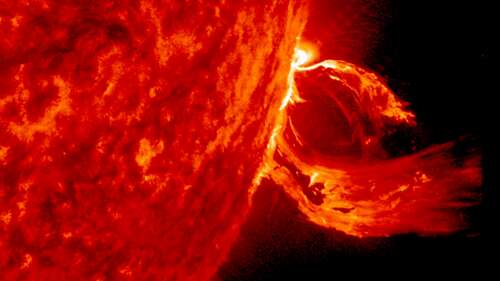
If something like Carrington or the 2012 near-miss were to sucker punch us today, the effects could be catastrophic. A 2013 study examining the near-miss estimated that it might have been even stronger than Carrington if it had fired off a week or so earlier, and it might have taken years to get through the aftermath. The economic impact could have been in excess of $2 trillion, according to NASA.
The same study outlines the layers of devastation. First, powerful X-rays would have arrived, knocking out radio communications and fiddling with our GPS systems. Next, a wave of charged particles would have arrived and fried satellites. Finally, the CMEs would have struck, flooding the atmosphere with energy. Electrical transformers, which are difficult to repair or replace, might have been destroyed by the influx. Anything that plugs into the grid or relies on electrical power would have shut down.
In the years since 2012, and certainly in the years since Carrington, we have only become more dependent on our gadgets, more entrenched into an electrical way of life. If one of these superstorms struck today, NASA says it would be like going back to the 18th century.

